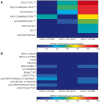Agenesis of the corpus callosum and autism: a comprehensive comparison
- PMID: 24771497
- PMCID: PMC4072909
- DOI: 10.1093/brain/awu070
Agenesis of the corpus callosum and autism: a comprehensive comparison
Abstract
The corpus callosum, with its ∼200 million axons, remains enigmatic in its contribution to cognition and behaviour. Agenesis of the corpus callosum is a congenital condition in which the corpus callosum fails to develop; such individuals exhibit localized deficits in non-literal language comprehension, humour, theory of mind and social reasoning. These findings together with parent reports suggest that behavioural and cognitive impairments in subjects with callosal agenesis may overlap with the profile of autism spectrum disorders, particularly with respect to impairments in social interaction and communication. To provide a comprehensive test of this hypothesis, we directly compared a group of 26 adults with callosal agenesis to a group of 28 adults with a diagnosis of autism spectrum disorder but no neurological abnormality. All participants had full-scale intelligence quotient scores >78 and groups were matched on age, handedness, and gender ratio. Using the Autism Diagnostic Observation Schedule together with current clinical presentation to assess autistic symptomatology, we found that 8/26 (about a third) of agenesis subjects presented with autism. However, more formal diagnosis additionally involving recollective parent-report measures regarding childhood behaviour showed that only 3/22 met complete formal criteria for an autism spectrum disorder (parent reports were unavailable for four subjects). We found no relationship between intelligence quotient and autism symptomatology in callosal agenesis, nor evidence that the presence of any residual corpus callosum differentiated those who exhibited current autism spectrum symptoms from those who did not. Relative to the autism spectrum comparison group, parent ratings of childhood behaviour indicated children with agenesis were less likely to meet diagnostic criteria for autism, even for those who met autism spectrum criteria as adults, and even though there was no group difference in parent report of current behaviours. The findings suggest two broad conclusions. First, they support the hypothesis that congenital disruption of the corpus callosum constitutes a major risk factor for developing autism. Second, they quantify specific features that distinguish autistic behaviour associated with callosal agenesis from autism more generally. Taken together, these two findings also leverage specific questions for future investigation: what are the distal causes (genetic and environmental) determining both callosal agenesis and its autistic features, and what are the proximal mechanisms by which absence of the callosum might generate autistic symptomatology?
Keywords: autism; connectivity; corpus callosum; developmental neuropathology; social cognition.
© The Author (2014). Published by Oxford University Press on behalf of the Guarantors of Brain. All rights reserved. For Permissions, please email: journals.permissions@oup.com.
Figures




References
-
- Alexander AL, Lee JE, Lazar M, Boudos R, Dubray MB, Oakes TR, et al. Diffusion tensor imaging of the corpus callosum in Autism. Neuroimage. 2007;34:61–73. - PubMed
-
- Badaruddin DH, Andrews GL, Bölte S, Schilmoeller KJ, Schilmoeller G, Paul LK, et al. Social and behavioral problems of children with agenesis of the corpus callosum. Child Psychiatry Hum Dev. 2007;38:287–302. - PubMed
-
- Banich M, Brown WS. A life-span perspective on interaction between the cerebral hemispheres. Dev Neuropsychol. 2000;18:1–10. - PubMed
-
- Barkovich AJ, Norman D. Anomalies of the corpus callosum: correlation with further anomalies of the brain. AJR Am J Roentgenol. 1988;151:171–9. - PubMed
-
- Barnea-Goraly N, Kwon H, Menon V, Eliez S, Lotspeich L, Reiss AL. White matter structure in autism: preliminary evidence from diffusion tensor imaging. Biol Psychiatry. 2004;55:323–6. - PubMed
Publication types
MeSH terms
Grants and funding
LinkOut - more resources
Full Text Sources
Other Literature Sources
Miscellaneous

